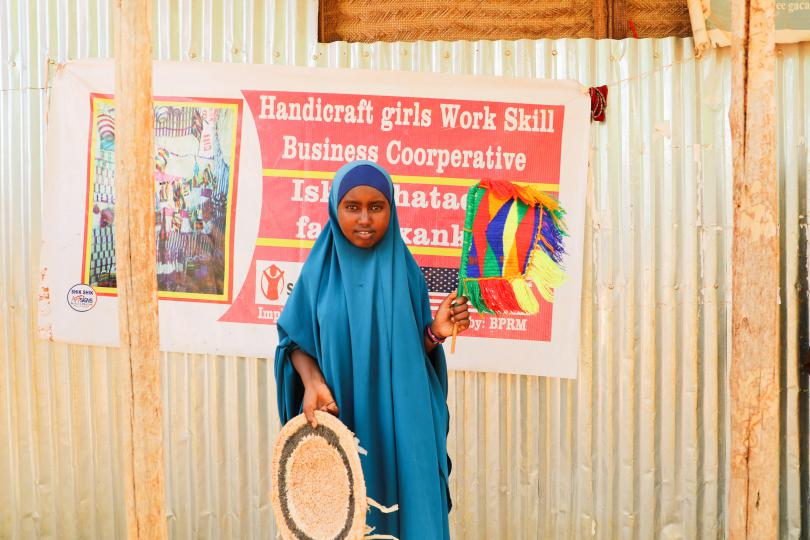Handcrafting a Future: Ayan’s Story

Story summary
Ayan*, aged 15, resides in one of the refugee camps in Liban zone of the Somali region of Ethiopia with her grandmother. Ayan lost both her parents due to conflict in her home country, Somalia, and fled to Ethiopia with her grandmother.
Ayan, a sixth grader, participates in handcrafts training at the handcraft girls work skill cooperative within a child friendly center at one of the refugee camps in Liban zone. This was established by Save the Children with funding support from Bureau of Population, Refugees, and Migration (BPRM). The child friendly center serves refugee and host community children.
At the center, refugee children like Ayan participate in handicraft training tailored specifically for girls. They also have access to psychosocial support. Unaccompanied and separated and children are provided with essential non-food items (NFIs) such as blankets, clothing, and personal hygiene and sanitary materials. Furthermore, children have the chance to partake in a variety of indoor and outdoor games.
Ayan’s story in her own words (Quotes):
"My name is Ayan; I live with my grandmother. We came here from Somalia when I was a little girl, but I don't remember much about how we got here."
"My mom and dad passed away before we fled here. I left Somalia with my grandmother.”
"Save the Children provides us with support. I receive items such as soap, sanitary pads, blankets, and clothing."
"I also participate in handicraft training at this center. I enjoy being at the center to take part in these activities. I am skilled at making traditional items such as water coolers and fans.”
“I have been coming to the center for the last four years, and I truly enjoy it. Currently, I am in grade six, and I love learning both English and Somali languages.”
“In the future, I aspire to become a businesswoman. I plan to create these traditional items and sell them."

Background / Project information
Save the Children has been delivering humanitarian services in Liban Zone, Dollo Ado since 2009. It has been providing child protection and education services to refugees and the host community through BPRM project. The refugee strategy presents an integrated child protection and education approach to ensure that the most vulnerable children in the refugee camps receive quality case management and referrals, required psycho-social support, as well as better education access for younger ages. The project intends to build on the gains achieved in improving the wellbeing of vulnerable children through BPRM’s financial support in the last four consecutive years. There are 32,294 (20,242 refugee and 2,052 host community) project participants in Buramino, Hilaweyn, Kobe, Melkadida, Bokolmayo refugee camps.
In addition, child protection interventions in the refugee camp deliver prevention and response activities and advocate for the rights of refugee children. The project has supported thousands of children in Dolo Ado refugee camps including unaccompanied and separated children (UASC) and other children at risk. Children receive both direct and indirect support through advocating for their rights, provision of nonfood items (NFIs), trainings to community, case management services and referrals.





